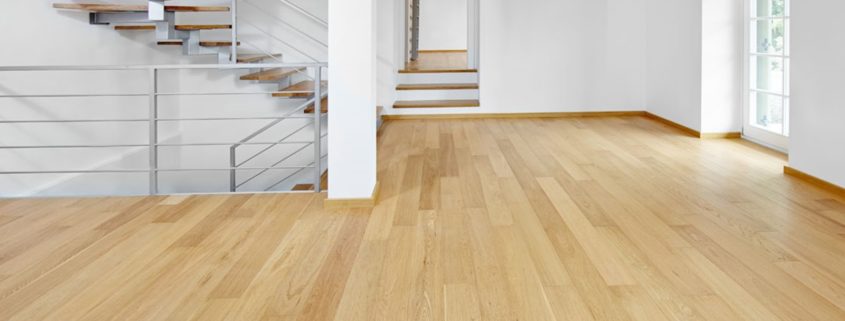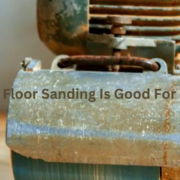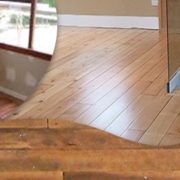How To Get Rid of Swirl Marks from Sanding
If you’ve ever experienced the frustration of swirl marks appearing after sanding a surface, you’re not alone. These pesky marks can be a real eyesore, but fear not—there are effective ways to banish them and achieve that flawless finish you’re after. In this blog, we’re diving into the art of removing swirl marks from sanding with confidence.
We’ll explore the right sandpaper grit, mastering proper floor sanding Melbourne techniques, and the power of polishing compounds to restore that smooth, blemish-free surface.
Whether you’re a seasoned DIY enthusiast or a novice woodworker, this guide is packed with tips and techniques to help you bid farewell to those stubborn swirl marks.
So, let’s dive in and learn how to tackle this issue head-on!
1. Understanding Swirl Marks from Sanding:
Before we discuss how to remove swirl marks, it’s crucial to understand what causes them in the first place. Simply put, swirl marks are fine scratches that appear on a sanded surface, often taking on a circular pattern. These marks are typically a result of improper sanding technique, wrong grit selection, or the use of worn-out sandpaper.
When we sand, we aim to remove imperfections and create a smooth surface. However, if we apply too much pressure, sand in a circular motion, or use a lower grit sandpaper for a finer finish, we risk creating those dreaded swirl marks.
2. Selecting the Right Sandpaper Grit:
To effectively remove swirl marks, it’s imperative to select the appropriate sandpaper grit. Grit sizes range from coarse to fine, with each serving a specific purpose. Coarser grits, such as 80 or 120, are ideal for initial sanding to remove rough surfaces or old finishes. As you progress, you’ll move on to intermediate grits like 220 or 320, and finally, finer grits like 400, 600, or even 1000 for a smooth finish.
When choosing the grit for your floor sanding Melbourne project, consider the surface material and the desired outcome. Keep in mind that it’s always better to start with a coarser grit and gradually work your way up to finer grits. This ensures that you remove imperfections without introducing new ones.

3. Proper Sanding Technique to Prevent Swirl Marks:
Now that we understand the causes and have the right sandpaper grit let’s focus on perfecting our sanding technique. The key to avoiding swirl marks is to maintain consistent pressure and use smooth, even strokes. When sanding, always move in one direction, preferably with the grain of the wood or the surface you’re working on. Circular motions should be avoided at all costs!
Using a sanding block or tool can also be incredibly helpful. Not only does it provide stability and control, but it also ensures even pressure distribution across the surface. Remember, patience is key here. Rushing through the sanding process is a surefire way to end up with unsightly swirl marks.
4. Identifying Swirl Marks After Sanding:
After sanding, it’s essential to inspect the surface for any remaining swirl marks. To visually spot swirl marks, examine the sanded surface under adequate lighting conditions. Shadows can reveal the presence of those sneaky marks. Additionally, try running your fingers lightly over the surface to feel for any imperfections caused by swirl marks.
By identifying swirl marks early on, you can take the necessary steps to remove them and achieve the smooth finish you desire.
5. Steps to Remove Swirl Marks:
Now that we’ve covered the basics let’s dive into the actual process of removing swirl marks. This step-by-step guide will help you achieve that flawless finish you’ve been dreaming of.
5.1 Initial Inspection and Surface Preparation:
Before proceeding with the removal process, it’s crucial to thoroughly inspect the sanded surface. Look out for any remaining imperfections or stubborn swirl marks that may have escaped your initial scrutiny. Once you’re satisfied with the inspection, it’s time to prepare the surface for the next steps.
Start by cleaning the surface to remove any dust, debris, or contaminants that may affect the swirl mark removal process. You can use a soft brush, tack cloth, or a gentle cleaning solution to ensure a clean working surface.
5.2 Eliminating Swirl Marks with Finer Grit Sandpaper:
To begin removing the swirl marks, you’ll need to use progressively finer grits of sandpaper. For example, you can start with a 1000-grit sandpaper and then move on to a 1500-grit. It’s essential to apply light pressure while sanding, as excessive pressure can create new swirl marks or damage the surface.
Using the finer grit sandpaper, sand the affected area in the direction of the grain or surface pattern. Be patient and take your time to ensure the swirl marks are gradually reduced or eliminated. Remember, it’s better to repeat this process with finer grits than to rush through it and risk further damage.
5.3 Utilising Rubbing Compound or Polishing Compound:
Rubbing compound or polishing compound can work wonders in removing those stubborn swirl marks. These compounds are designed to be used with a machine or by hand, depending on the size of the project and personal preference.
Before applying the compound, make sure to read and follow the product instructions carefully. Apply a small amount of compound to a clean, soft cloth or buffing pad, and work it into the affected areas using gentle circular motions. The compound will help break down the swirl marks, gradually blending them into the surrounding surface.
Again, patience is key here. Take breaks to assess your progress and avoid overworking the surface. Remember, you’re aiming for a flawless finish, so take your time and enjoy the process.
5.4 Buffing and Polishing the Surface:
To achieve that mirror-like finish, it’s time to bring out the big guns – buffing and polishing. You can use a suitable machine or opt for hand polishing, depending on the size and intricacy of the project.
When using a machine, start with a low or medium speed to avoid overheating or damaging the surface. Use a clean, soft buffing pad suitable for the task at hand. Apply a polishing compound, specifically designed for your surface material, to the pad and work it into the surface with slow, overlapping motions.
If you prefer hand polishing, use a clean, soft cloth and apply the polishing compound using small circular motions. Again, take your time and regularly assess your progress to ensure you’re on the right track.
6. Preventing Swirl Marks in Future Projects:
Now that you’ve successfully removed swirl marks from your current project, it’s essential to learn how to prevent them in future sanding endeavours. Here are some practical tips to keep in mind:
– Always select the appropriate sandpaper grit based on the project requirements. Remember to start with a coarser grit and gradually move to finer grits for a smooth finish.
– Maintain consistent pressure and sand in one direction, preferably with the grain or surface pattern.
– Regularly inspect the surface during sanding to catch any potential swirl marks early on. This allows you to take corrective action before it becomes more challenging to remove.
With these preventative measures in mind, you’ll be well on your way to achieving swirl mark-free finishes consistently.
Conclusion:
In conclusion, banishing those pesky swirl marks from sanding requires patience, attention to detail, and the right techniques. From selecting the proper sandpaper grit to using polishing compounds, every step plays a crucial role in achieving a flawless finish.
Embracing precision and taking the time to perfect each stage of the process are the keys to success. By following these steps, you can bid farewell to swirl marks and welcome a smooth, professional result.
For all your floor sanding Melbourne needs, trust Total Floor Services to deliver exceptional quality floor sanding and expertise. With our meticulous timber flooring sanding and polishing service, your floors will be free from swirl marks, leaving them looking impeccable and polished.











 Address:
Address:  Phone:
Phone:  ABN: 63 602 512 489
ABN: 63 602 512 489




